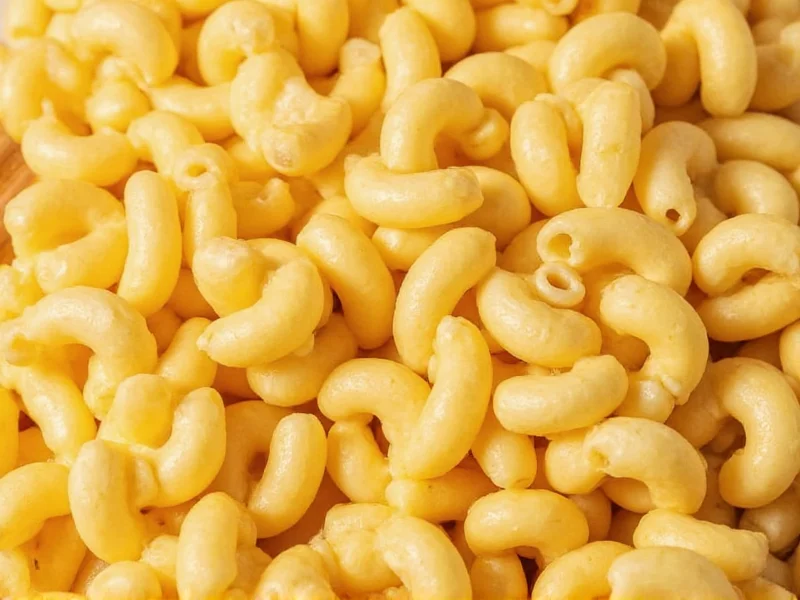Understanding the shelf life of your favorite comfort food is essential for both safety and quality. Boxed macaroni and cheese has become a pantry staple in households worldwide, but many consumers wonder exactly how long this convenience food remains viable. Let's explore the factors that determine how long does box mac and cheese last under various storage conditions.
Factors Affecting Boxed Mac and Cheese Shelf Life
Several elements influence how long does box mac and cheese last before quality degrades or safety becomes compromised. The primary factors include packaging integrity, storage environment, and whether the product has been opened.
Manufacturers typically print a "best by" or "use by" date on the box rather than an expiration date. This date indicates when the product will maintain peak quality, not when it becomes unsafe to consume. Properly stored dry pasta and powdered cheese mix can remain safe well beyond this date, though flavor and texture may diminish over time.
Detailed Shelf Life Guidelines
| Product Condition | Storage Method | Shelf Life |
|---|---|---|
| Unopened box | Pantry (cool, dry place) | 1-2 years past printed date |
| Opened box (dry mix) | Airtight container in pantry | 6-8 months |
| Prepared mac and cheese | Refrigerator (covered) | 3-5 days |
| Prepared mac and cheese | Freezer (airtight container) | 1-2 months |
Optimal Storage Practices for Maximum Shelf Life
To ensure your boxed macaroni and cheese maintains quality for as long as possible, proper storage is crucial. When storing unopened boxes, choose a location away from heat sources, direct sunlight, and humidity. The ideal pantry temperature for dry goods like mac and cheese is between 50-70°F (10-21°C).
Once you've opened the box, transfer the remaining dry mix to an airtight container. This prevents moisture absorption and keeps out pantry pests. Glass jars with sealing lids or food-grade plastic containers work well for this purpose. Avoid storing opened mac and cheese mix in the original box, as it doesn't provide adequate protection against humidity.
For those wondering how long does box mac and cheese last in less-than-ideal conditions, consider that exposure to heat, humidity, or temperature fluctuations significantly reduces shelf life. In particularly humid environments, the powdered cheese mix may clump or degrade more quickly.
Identifying Spoiled Mac and Cheese Mix
While dry pasta and cheese powder have impressive shelf stability, they can eventually spoil. Knowing the signs that indicate your boxed mac and cheese is no longer safe to eat is essential for food safety. Look for these warning signs:
- Unusual odors: Fresh mac and cheese mix should have a mild, slightly cheesy aroma. Any sour, rancid, or musty smells indicate spoilage.
- Visible moisture or clumping: Small clumps might be normal in older boxes, but large, hard clumps suggest moisture exposure.
- Mold growth: Any visible mold, even in small amounts, means the entire box should be discarded.
- Off-colors: Significant color changes in the cheese powder (like darkening or unusual discoloration) signal degradation.
- Pantry pests: Evidence of insects or their eggs means the product is contaminated.
When evaluating how long does box mac and cheese last after the printed date, remember that while the product might remain safe beyond this date, the flavor profile will gradually deteriorate. The cheese powder contains fats that can eventually become rancid, affecting taste even if the product remains technically safe to eat.
Food Safety Considerations for Prepared Mac and Cheese
Many consumers don't realize that the shelf life changes dramatically once water is added to the mix. Prepared mac and cheese enters the "time-temperature danger zone" where bacteria can multiply rapidly. Always refrigerate leftovers within two hours of cooking (one hour if room temperature exceeds 90°F/32°C).
When reheating previously cooked mac and cheese, ensure it reaches an internal temperature of 165°F (74°C) to eliminate potential pathogens. For best quality when freezing prepared mac and cheese, divide it into single-serving portions and use within two months.
Maximizing Quality Beyond the Printed Date
If you're trying to determine how long does box mac and cheese last in your specific storage conditions, consider implementing a first-in, first-out system in your pantry. Rotate older boxes to the front so they get used before newer purchases. This simple practice helps ensure you consume products while they're at their peak quality.
For long-term storage enthusiasts, transferring opened mac and cheese mix to vacuum-sealed containers with oxygen absorbers can extend shelf life beyond the standard 6-8 months. This method is particularly useful for those who buy in bulk or live in humid climates where moisture exposure is a concern.
Common Questions About Mac and Cheese Shelf Life
Understanding the nuances of how long does box mac and cheese last helps prevent food waste while maintaining safety standards. Many consumers have specific questions about edge cases and special circumstances that affect shelf life.











 浙公网安备
33010002000092号
浙公网安备
33010002000092号 浙B2-20120091-4
浙B2-20120091-4